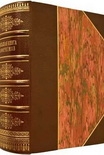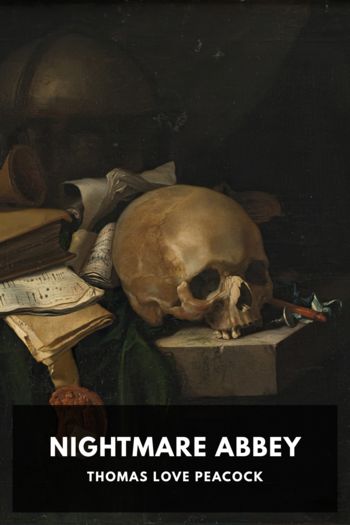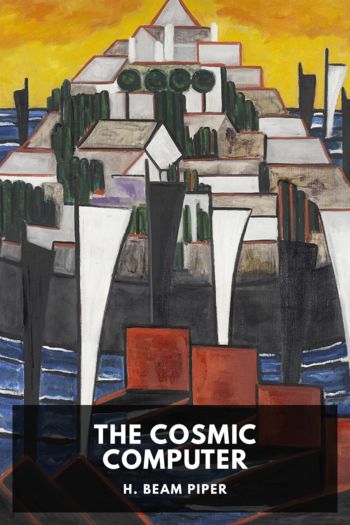Gluck, Diana Souhami [good novels to read in english txt] 📗

- Author: Diana Souhami
Book online «Gluck, Diana Souhami [good novels to read in english txt] 📗». Author Diana Souhami
Two more judges wanted their portraits painted in the early 1950s: Sir Raymond Evershed, who succeeded Sir Wilfrid as Master of the Rolls, and Sir Reginald Croom-Johnson. Gluck usually painted largely from memory, using only a few sittings. The time-consuming part was the application of paint – a quest for perfection of line, shadow, texture and detail. ‘I compare the painting of a picture to the rehearsing of an orchestra’, she wrote to Lady Evershed (18 March 1952), ‘so some days the drums are too loud for the strings and so on, until the day when all the instruments sing to me.’
She stayed with the Eversheds for five days in October 1951 in their Grange House farm in Norfolk. Sir Raymond went out shooting most of the time, but he posed for an hour or so each day. Gluck painted him in his Master of the Rolls Privy Council robes, lace jabot and ruffles, gold braid and wool wig. All that, and the high colour of his face, got from his outdoor sports, make it a bright if stern affair. Gluck took the robes home on the train in locked tin boxes and lodged them in the bank’s strong room when not working with them. The portrait was presented by Evershed’s uncle, Edward, to the family’s native town, Burton-on-Trent, where Evershed was a Freeman. Gluck’s picture shows him holding the Roll of the Freedom of the town, and with his own, and Burton-on-Trent’s coats of arms either side of his head. Uncle Edward knew nothing about pictures but wanted this one to be a success with no expense spared. ‘If you feel like diamonds in the frame he won’t jib,’ Lady Evershed wrote (17 October 1951). In fact he paid Gluck 500 guineas and all expenses and the picture was shown at the rooms of the framers James Bourlet & Sons in London before going to Burton Town Hall. A presentation ceremony on 5 December 1952, presided over by the Mayor, made the lead story in the Burton Observer. ‘It is well known’, said Sir Raymond at the ceremony, ‘that Miss Gluck has an unerring eye for the truth, and what is worse, depicting it.’ He said that as a result of the painting he had gained a friend in Miss Gluck, who not only as an artist of very great talent, but also as an individual, he had come greatly to admire.
As for Sir Reginald Croom-Johnson, he wanted to be painted in his summer scarlet robes with grey silk bindings and black stoles like a forebear of his, Sir John Powell, who was a Judge of the Common Pleas in 1688, and whose picture was in the National Portrait Gallery. Gluck quoted him a feet of 350 guineas which he felt was more than he ought spend, so they settled for a smaller picture, 51 × 46 cm, for 200 guineas. ‘I wish I could have a much bigger work of yours,’ he wrote (28 December 1951),
but before long in the way this country is going we shall have to reduce all our household goods to the very smallest proportions. What am I to do with an historical Dutch sideboard which measures over 8 feet long?
Sittings were hard to arrange, as he spent weekends at his home in Somerset, but he was brought by his chauffeur and butler to the Chantry House with his robes and white gloves in April 1952 for several sittings, on two of which he fell asleep. He kept gently chivvying Gluck to finish the picture. She worked at it on and off for two years, lamenting the state of the canvas and her paints. The finished painting was by no means the best of her legal portraits. Sir Reginald appears to be sitting uncomfortably, blanketed in scarlet.
In 1953 Gluck’s brother, Louis, himself a barrister and QC, was knighted with the same pomp and circumstance as these men of the Establishment whom she painted and who so liked her company. On several occasions it was mooted that she should paint him too, but they were never at peace with each other long enough for this to come about. With his professional counterparts she achieved a friendliness that now eluded her with him. And while she worked at these formal portraits of eminent judges she was herself battling against a cosmic injustice. Her mother had lost her reason. Aged seventy-five, the Meteor was diagnosed as suffering from senile mania. Probably she had Alzheimer’s Disease. She was not eating, coping, or looking after herself. Her eyes had a fixed stare much of the time and she had bouts of confusion, purposeless activity, irrational temper loss and paranoia.
The 1950s were not enlightened times for the treatment of the mentally ill. The tendency was to institutionalize and isolate sufferers. Had the Meteor suffered a more straightforward illness, her life would have been made tolerable with all the palliatives money can buy. As it was, she was beyond the reach of help by money. Nor were Gluck or her brother temperamentally suited to cope with such a crisis. The rift between them proved tragic at this time.
Despite her parlous physical and mental state, Francesca Gluckstein was, in 1950, still living, albeit chaotically, in the Cumberland Hotel. A nurse in mufti, Miss McClennan, looked after her, but more support was needed. On 28 February the Meteor went to tea with her son in St John’s Wood. She was irrational and hyper-manic.





Comments (0)